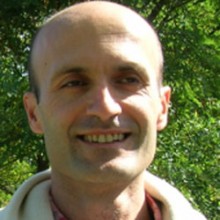
Office Phone: (+30) 2810 39 1912
Lab Phone: (+30) 2810 39 1912
Fax: STEPC A207
Email: tsibidis@iesl.forth.gr
Full CV: Download
Publications PDF: Download
George D.Tsibidis is a Research Scientist at the Institute of Electronic Structure and
Laser at FORTH. He received his PhD in Theoretical High Energy Physics at the
University of Sussex in 1997. In 2017 he visited University of Lyon, Laboratoire
Hubert Curien, University of Saint Monnet, Saint-Etienne, France, as a Visiting
Professor. His interests include theoretical approaches related to ultrafast laser
interaction with materials and laser processing. He has been the author of numerous
peer-reviewed scientific papers on laser-matter interaction. He has been invited to a
large number of international conferences on laser-matter interaction and he has
participated in many competitive research projects.
Education
- 1997, Ph. D. Physics Department, University of Sussex, UK.
- 1993, Master of Science, Physics Department, University of Pennsylvania, PA, USA.
- 1990, Bachelor, Department of Physics, University of Athens, Greece.
Career
- 4/2004-Today, Research Associate, Institute of Electronic Structure and Laser, Foundation for Research and Technology – Hellas, Heraklion, Greece.
- 31/8/2017-1/10/2017, Visiting Professor, University of Lyon, Laboratoire Hubert Curien, University of Saint Monnet, Saint-Etienne, France.
- 10/2000 - 12/2002, Postdoctoral Research Fellow in the Mathematics Institute, University of Warwick, UK.
- 1//2000-10/2000, Postdoctoral Research Fellow in the School of Electrical Engineering, University of Birmingham, UK.
Interests
- Theoretical modelling and simulation of the interaction of pulsed lasers with semiconducting, metallic and dielectric surfaces (fundamental physical mechanisms),
- Theoretical investigation of the formation of nano/micro-sized structures on solids after irradiation with pulsed laser sources-craters, ripples, grooves,
- Theoretical investigation of local nano-heating and substrate modification based on enhanced absorption and near-field properties of metallic nanoparticles,
- Fluid dynamics modelling to explain surface modification effects,
- Exploration of stress/strain generation and thermomechanical effects,
- Electromagnetic wave propagation inside solids (Finite Difference Time Domain techniques),
- Elaboration of conditions that induce thermo-elastic-plastic effects on thin and bulky semiconducting and metallic surfaces,
- Simulations and modelling in optical fibres (use of Finite Difference Time Domain methods, CUDOS, etc).
- Applications of reaction-diffusion equations to model and simulate various physical processes


